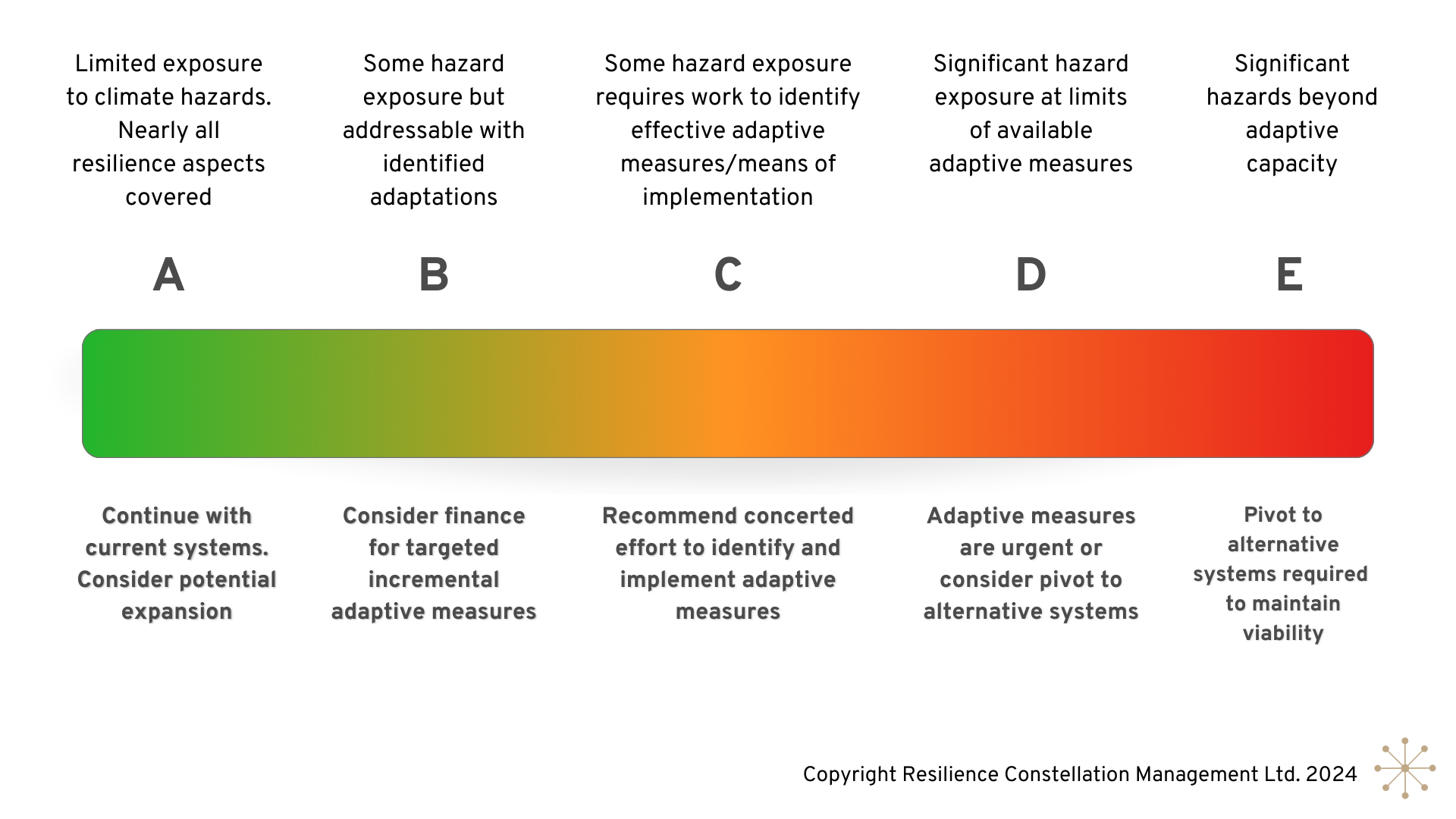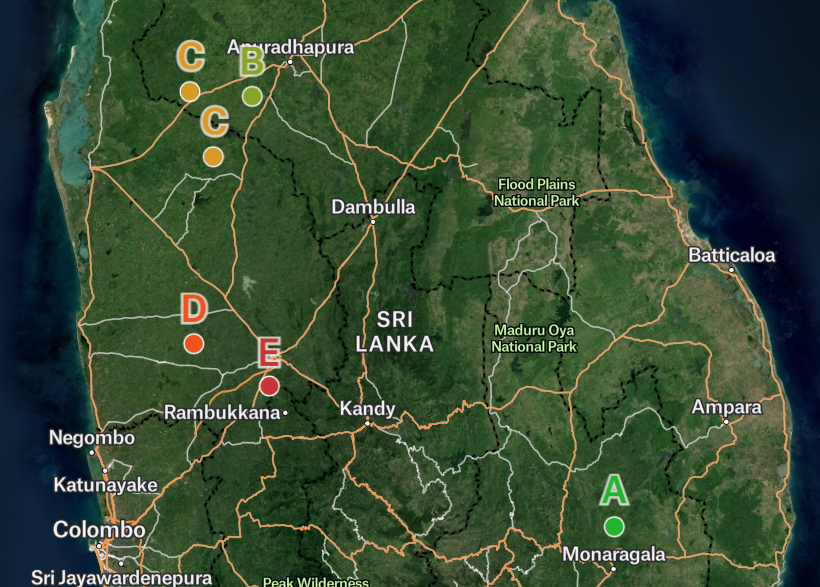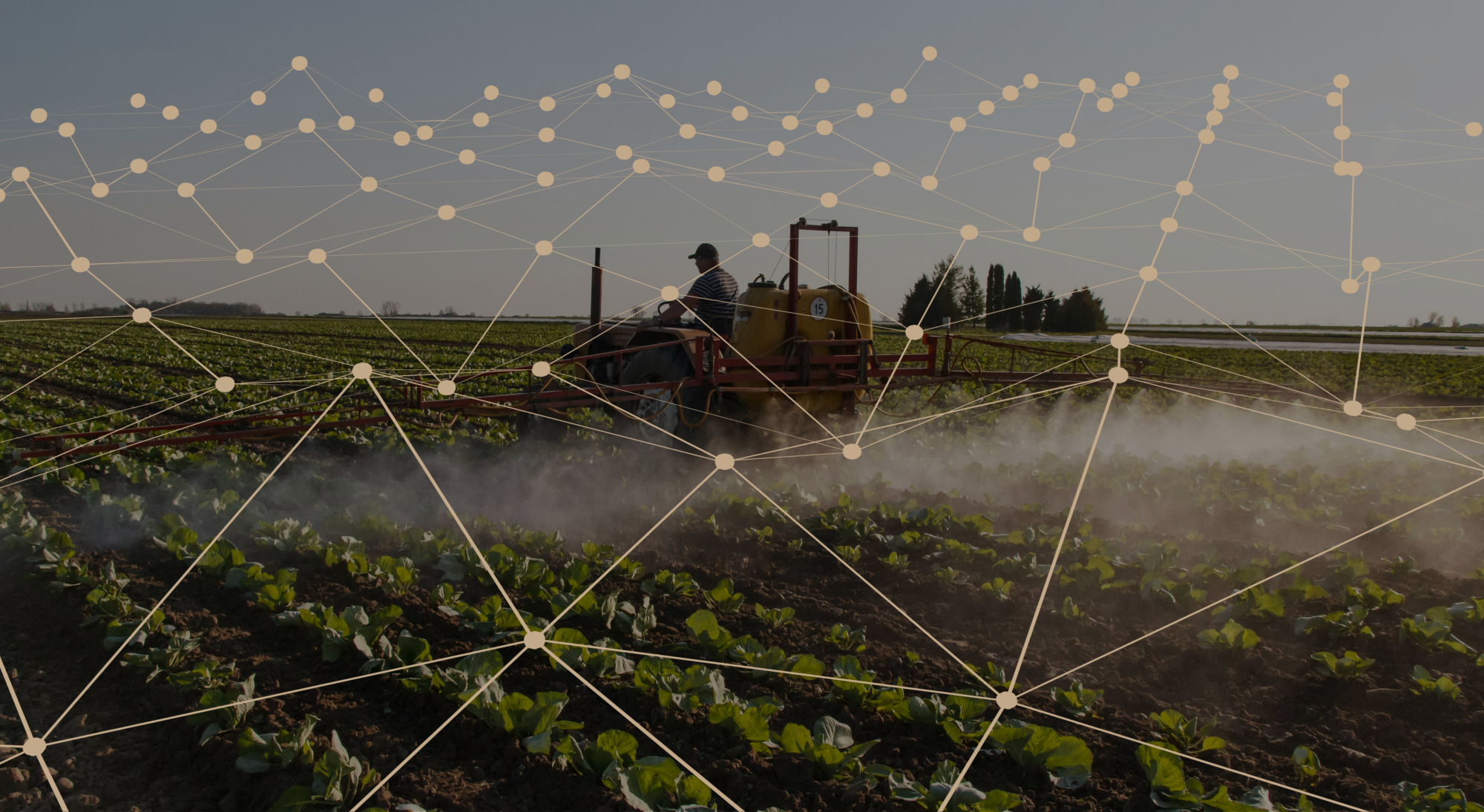Measuring climate resilience with resilience ratings
As climate change brings more frequent extreme weather events and alters the growing conditions that agricultural systems have evolved to exploit, farmers must adapt to become resilient. When incremental adaptations are no longer sufficient, farm businesses, whether they are small family concerns or large commercial operations must pivot or transform their model of production in more fundamental ways.
Governments, finance bodies and businesses concerned with food and fibre should all be interested to know the resilience status of farms, whether they are recipients of finance, providers of raw materials or stewards of the countryside. But until recently, assessments of resilience have been conducted as isolated studies and snapshots.
To address the need for systematic, repeatable and consistent assessments Resilience Constellation has developed a practical methodology for measuring the resilience of farm businesses to climate hazards by means of a Resilience Rating.
Resilience in this context refers to the capacity of a farm business to continue in its current form, albeit with incremental changes and improvements. The climate hazards addressed by the methodology are climate challenges that farm businesses face, in the form of droughts, heatwaves, flooding and hurricane force winds.
Methodology
The methodology is used to assess resilience to each climate hazard separately, because their impacts on farms, and the responses of farmers to them, are so different. Our focus is on climate hazards as they are experienced now, across particular areas with similar agricultural systems. These trends in hazards already reflect some level of anthropogenic climate change.
In the long-term, climate hazards may change substantially (in frequency and/ or intensity) and the resilience ratings produced now will not accurately reflect the resilience of farms in one or two decades’ time. However, farming methods, agricultural technology and infrastructure are constantly evolving, so comparing current agricultural context with a climate forecast decades into the future serves only to add to an unhelpful sense of futility.
The ratings produced by the methodology are, therefore, used to provide an assessment of current climate resilience and short-term future resilience. This is relevant to the farmers, who may have long-term plans, but most of whom are driven by short-term economic reality. It is also important to our customers (with an interest in farm productivity and financial sustainability), who are also operating within commercial time frames of typically less than 5 years.
The data sources for our resilience ratings are the farmers themselves and geospatial datasets covering land-use types, climate datasets, climate change scenarios, historical impacts of climate hazards and hazard models, crop and livestock suitability assessments, soil and land productivity. For now, the emphasis is on the farmers’ individual experience of climate hazards and their responses to it. In future, we will increase the proportion of geospatial data and incorporate the outputs of crop models using hyperspectral satellite imagery to monitor changes in farm health and productivity over time.
Our approach to quantifying resilience is built on international climate adaptation and resilience research that has been carried out over the last 20 years.
We produce a resilience score from a function of four indices of: exposure, sensitivity, adaptability and transformability.
That is: exposure of a farm to a given climate hazard; sensitivity of the agricultural system and associated farm infrastructure to that hazard; adaptability of the farm manager and chosen agricultural system to the effects of the hazard; and the ability of the farm business to transform itself in the face of climate impacts that threaten its viability, for example by changing to different agricultural systems or modifying its role in the supply chain.
Our basic data takes the form of “resilience factors”, which are essentially the inverse of “risk factors”. A resilience factor is an indicator that reflects an important attribute of exposure, sensitivity, adaptability or transformability. Each resilience factor can be scored against a quantitative or semi-quantitative scale, weighted according to its relative importance and combined with other resilience factors to calculate each of the four indices. In turn, this enables us to calculate a resilience score.
A good analogy is the use of risk factors by medical professionals as a valuable tool to assess a patient’s overall health and predict their susceptibility to certain diseases. In this example, risk factors are factors that increase the likelihood of developing a particular condition. In our farming context, resilience factors are factors that decrease the likelihood of adverse impacts of a particular climate hazard.
By identifying and managing these risk factors, healthcare providers can offer preventive measures and personalised treatment plans. In the same way, by identifying resilience factors we can help farmers identify adaptive measures and build the resilience of their farm businesses. We do this by sharing good adaptive and transformative practice captured during our farm surveys.
Climate Resilience Ratings for Agriculture

Once the climate resilience score has been calculated, a climate resilience rating is determined, depending on preset threshold scores for A, B, C, D and E ratings. The rating enables results from a range of farm businesses to be quickly compared and assessed by our customers and relevant benchmarking information returned to the farmers.
The resilience factors can be alternatively grouped into resilience categories that help assess: the physical resilience of the farmland, the infrastructural resilience of the farms, the operational resilience of the farm systems, the financial resilience of the farmers, and the social resilience of the farmers and their networks. These five categories provide further insights into the strengths and weaknesses of individual farms and farm groups.
Pilot studies of the methodology are underway
The approach has already been tested on rice farmers across Sri Lanka and is now being applied to coffee farmers in Chiapas in Mexico. More pilots are planned over the next 6 months, to include potato farmers in the United Kingdom and vineyards in Australia and New Zealand. The methodology is designed for farmers of specialist crops and livestock, and small farmers; it may require further modification to be applied to well-resourced large-scale farming enterprises and agribusinesses engaged in production of commodities.

Farm resilience ratings across Sri Lanka
The strength of the methodology is its ability to incorporate the complex range of factors that determine the climate resilience of a cohort of farmers to a particular climate hazard in a manageable and replicable way. The weakness is the difficulty of comparing results across different hazards and different agricultural systems. The challenge to increasing comparability is one that we look forward to tackling as we build the data sets for multiple agricultural systems.
The robustness of the ratings increase with farm sample size and for this reason we aim to include at least 50 farm businesses in each of our surveys. The value of the results increases over time as time series data reveal trends in risk, resilience and adaptive behaviours.
In addition to the rating process itself we are innovating and collaborating with a number of organisations that support agriculture to make the processes an efficient and useful process for farms themselves – who should gain insights into how they sit relative to their peers on various aspects of resilience, how they might improve their situation, which adaptations are working well within the context they operate and what sources of finance are most appropriate for their continued viability.
Published by Resilience Constellation
If your organisation could benefit from our resilience ratings get in touch today,
or fill out our form to start your resilience journey.

